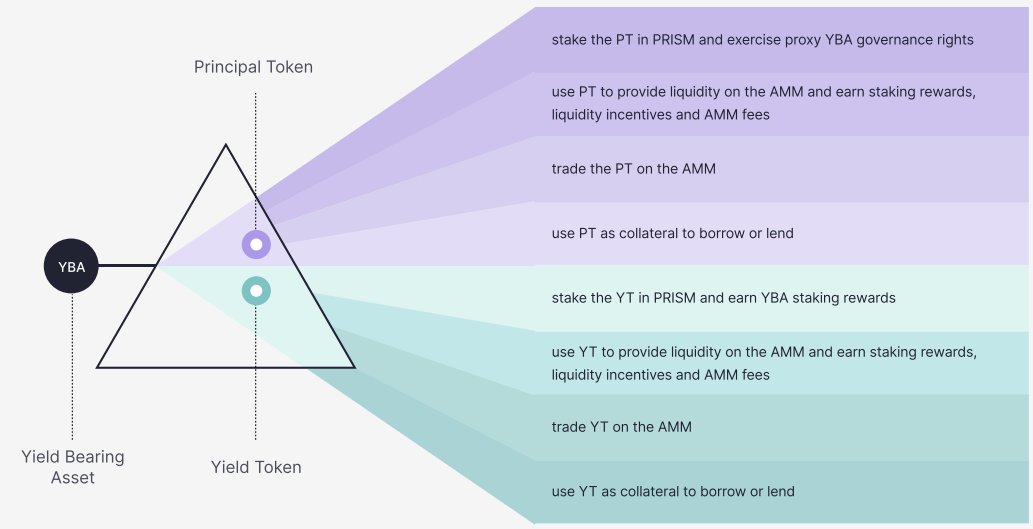
@prism_protocol - strategies 101
S02E02 - Yield cluster at @nebula_protocol
Today we will look at possible partnership between Nebula Protocol and Prism Protocol, that would provide a pretty decent option for a passive income.
/1
S02E02 - Yield cluster at @nebula_protocol
Today we will look at possible partnership between Nebula Protocol and Prism Protocol, that would provide a pretty decent option for a passive income.
/1
We all hope WAGMI. We write it on CT, we encourage one another as fellow #LUNAtics - and for good reasons. The spirit of community thrives.
But ser, what are we gonna do, once we finally make it?
@nebula_protocol and @prism_protocol might help with it.
/2
But ser, what are we gonna do, once we finally make it?
@nebula_protocol and @prism_protocol might help with it.
/2
Not sure about you, but once I make it, I will move a significant portion of my portfolio to a ‘safe haven’ - @anchor_protocol-Earn-like where I can enjoy 20-30% APR, which would allow me and my family not to worry about 💰 anymore.
What would that look like?
/3
What would that look like?
/3
I imagine that “safe” portfolio would be made of:
- $aUST
- $LUNA, $SCRT, $ATOM (for the staking APR)
- various LP tokens
… and perhaps some other yield-bearing tokens. Anything that is has somewhat low volatility and provides a cashflow to live off.
/4
- $aUST
- $LUNA, $SCRT, $ATOM (for the staking APR)
- various LP tokens
… and perhaps some other yield-bearing tokens. Anything that is has somewhat low volatility and provides a cashflow to live off.
/4
I could manage that portfolio myself, but… do I need to?
How about creating a cluster on @nebula_protocol that would contain the above tokens in certain proportions?
I could just sprinkle $UST into it, and just claim rewards every month - a self-paid salary, if you will.
/5
How about creating a cluster on @nebula_protocol that would contain the above tokens in certain proportions?
I could just sprinkle $UST into it, and just claim rewards every month - a self-paid salary, if you will.
/5
@prism_protocol can make that even better.
If the cashflow is all I need, the “non-yield-bearing” part of the token is unnecessary. I won’t say “useless”, but simply not needed in this scenario.
@prism_protocol will allow us to remove that part, keeping just the cashflow.
/6
If the cashflow is all I need, the “non-yield-bearing” part of the token is unnecessary. I won’t say “useless”, but simply not needed in this scenario.
@prism_protocol will allow us to remove that part, keeping just the cashflow.
/6
All of that in the spirit of making the best use of your capital.
As I have explained in S01E03, the price of $yLUNA-perp, assuming 10% staking APR should float around 0.59 $LUNA.
That’s 0.41 $LUNA we could turn into cashslow.
/7
As I have explained in S01E03, the price of $yLUNA-perp, assuming 10% staking APR should float around 0.59 $LUNA.
That’s 0.41 $LUNA we could turn into cashslow.
https://twitter.com/AgilePatryk/status/1450133297917480961?s=20
/7
Swapping $pLUNA into $yLUNA will give me another 10% * 0.41 / 0.59 = 6.94% APR.
That just turned my $LUNA staking rewards from 10% to almost 17% (+airdrops…).
That was at the cost of price action, but once I make it, I would not need to make it again, right?
/8
That just turned my $LUNA staking rewards from 10% to almost 17% (+airdrops…).
That was at the cost of price action, but once I make it, I would not need to make it again, right?
/8
Replicate the same for $ATOM, $SCRT, $DOT …
Add some $aUST or $oaUST...
… and you end up with a well-diversified portfolio that is (a) cashflow-heavy, (b) provides a reasonably stable cashflow, (c) still has an upside potential, as staking rewards scale with asset price.
/9
Add some $aUST or $oaUST...
… and you end up with a well-diversified portfolio that is (a) cashflow-heavy, (b) provides a reasonably stable cashflow, (c) still has an upside potential, as staking rewards scale with asset price.
/9
With all of that embedded into @nebula, we get a formula I would be quite willing to use to fund my crypto-retirement.
Or, share that with frens and family outside CT as a way to gain/retain FI with the smart use of crypto.
/10
Or, share that with frens and family outside CT as a way to gain/retain FI with the smart use of crypto.
/10
Please let me know if you enjoyed the episode - I appreciate the feedback and try to improve my game in sharing knowledge in approachable and easy-to-understand way.
/11
/11
Stay tuned for:
S02E03 - Fixed-rate borrowing on @mars_protocol
A 🧵with the full list of episodes (with links):
/12-end
S02E03 - Fixed-rate borrowing on @mars_protocol
A 🧵with the full list of episodes (with links):
https://twitter.com/AgilePatryk/status/1448951059402137611
/12-end
• • •
Missing some Tweet in this thread? You can try to
force a refresh







